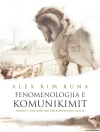When the German chemist Emil Fischer presented his lock-and-key hypothesis in 1899, his analogy to describe the molecular relationship between enzymes and substrates quickly gained vast influence and provided future generations of scientists with a tool to investigate the relation between chemical structure and biological specificity.
Rebecca Mertens explains the appeal of the lock-and-key analogy by its role in model building and in the construction of long-term, cross-generational research programs. She argues that a crucial feature of these research programs, namely ascertaining the continuity of core ideas and concepts, is provided by a certain way of analogy-based modelling.
यह ईबुक खरीदें और 1 और मुफ़्त पाएं!
भाषा अंग्रेज़ी ● स्वरूप PDF ● पेज 224 ● ISBN 9783839444429 ● फाइल का आकार 2.8 MB ● प्रकाशक transcript Verlag ● प्रकाशित 2019 ● संस्करण 1 ● डाउनलोड करने योग्य 24 महीने ● मुद्रा EUR ● आईडी 6406163 ● कॉपी सुरक्षा सामाजिक DRM












